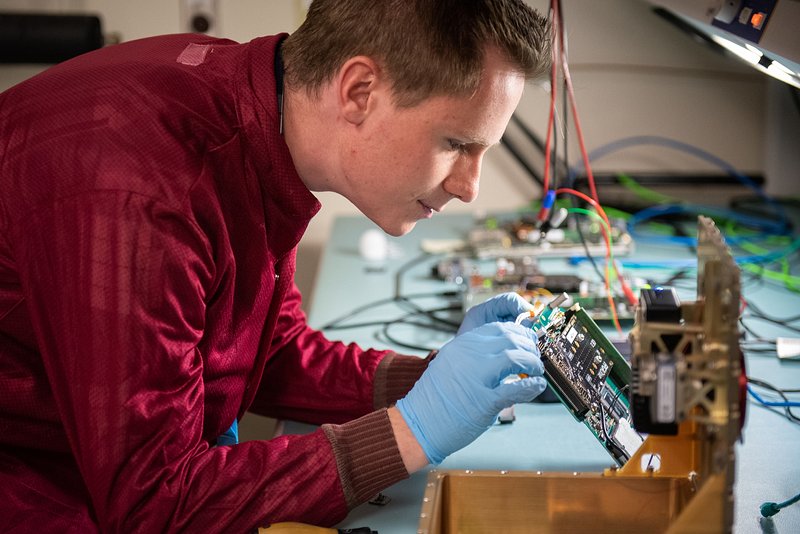
In today’s economic climate, where the cost of living continues to surge, the financial implications of car ownership have become a major concern for many consumers. While the sticker price of used cars has fortunately returned to more normal levels following the pandemic, other essential expenses associated with vehicles have seen a significant uptick. This includes everything from insurance premiums to the price of repair services and replacement parts, creating a complex financial landscape for car owners.
Rachel Cruze, a recognized financial expert, has highlighted this shift, noting in a YouTube video that “The cost of used cars now has dropped back to normal, but all other expenses related to cars, like insurance premiums, repair services, and replacement parts, have drastically increased recently.” She further emphasized the burden of “interest rates being crazy high over the past couple of years, which affects you big time if you’re taking out a car loan.” These combined factors underscore a pressing need for vehicles that are not just affordable upfront but also economical to maintain over their lifespan.
Several interconnected reasons contribute to this upward trend in car repair costs. As Rachel Cruze pointed out, “We’re now experiencing a shortage of mechanics and other service professionals who specialize in car repairs AKA essential worker jobs that help keep society running smoothly literally are becoming less popular for young adults today.” CNBC further elaborates on additional contributing factors, which include the increasing complexity and weight of modern vehicles, the adoption of new materials and manufacturing methods, and lingering pandemic-induced supply shortages. These challenges make choosing a reliable car that rarely needs repairs more crucial than ever, as informed consumers seek to mitigate long-term financial drains.

1. **Toyota Corolla: A Global Benchmark for Durability**The Toyota Corolla has long been celebrated as one of the most dependable cars globally, earning its reputation among drivers who prioritize longevity and minimal hassle. This model is a perennial favorite for good reason, consistently delivering a driving experience that is both reliable and remarkably straightforward, making it a stress-free option for a diverse range of owners.
Owners of the Corolla frequently report that their vehicles can comfortably exceed 300,000 miles, provided they receive regular, routine maintenance. This includes simple yet critical tasks such as timely oil changes, consistent brake checks, and the periodic replacement of filters. Such consistent, basic care is often all that is required to keep a Corolla running smoothly for hundreds of thousands of miles.
At the core of the Corolla’s impressive reliability is Toyota’s unwavering commitment to quality engineering and robust manufacturing. Every component, from the engine to the smallest sensor, is meticulously crafted to endure the rigors of daily driving without premature wear. This design philosophy translates into a car that handles everyday demands with exceptional resilience.
Furthermore, the Corolla’s design prioritizes ease of maintenance. Mechanics are widely familiar with its straightforward systems, which not only makes service quick but also tends to keep repair costs significantly lower compared to more complex vehicles. Its smooth engine is another hallmark, known for its consistent performance over many years, running quietly and resisting common issues like shaking or stalling.
The Corolla also excels in fuel efficiency, allowing owners to save substantially on gas over time, adding to its long-term affordability. Its widespread popularity ensures that replacement parts are readily available and affordable, preventing long waits or exorbitant expenses for repairs. This strong blend of durability, low maintenance, and high resale value makes the Corolla an outstanding choice for students, families, or anyone seeking a genuinely dependable vehicle.
Car Model Information: 2022 Toyota Corolla LE
Name: Toyota Corolla
Caption: Twelfth generation model (2020, hatchback)
Manufacturer: Toyota
Aka: unbulleted list
Production: November 1966 – present
Class: unbulleted list
Predecessor: Toyota Publica
Categories: 1970s cars, 1980s cars, 1990s cars, 2000s cars, 2010s cars
Summary: The Toyota Corolla is a series of compact cars (formerly subcompact) manufactured and marketed globally by the Japanese automaker Toyota Motor Corporation. Introduced in 1966, the Corolla was the best-selling car worldwide by 1974 and was one of the best-selling cars in the world until 1997, when it surpassed the Volkswagen Beetle as the world’s best-selling automobile of all time. Toyota reached the milestone of 50 million Corollas sold over twelve generations in 2021. The name Corolla is part of Toyota’s naming tradition of using names derived from the Toyota Crown for sedans, with “corolla” Latin for “small crown”. The Corolla has always been exclusive in Japan to Toyota Corolla Store locations, and manufactured in Japan with a twin, called the Toyota Sprinter until 2000. From 2006 to 2018 in Japan and much of the world, and from 2018 to 2020 in Taiwan, the hatchback companion had been called the Toyota Auris. Early models were mostly rear-wheel drive, while later models have been front-wheel drive. Four-wheel drive versions have also been produced, and it has undergone several major redesigns. The Corolla’s traditional competitors have been the Nissan Sunny, introduced the same year as the Corolla in Japan and the later Nissan Sentra, Subaru Leone, Honda Civic and Mitsubishi Lancer. The Corolla’s chassis designation code is “E”, as described in Toyota’s chassis and engine codes.
Get more information about: Toyota Corolla
Buying a high-performing used car >>>
Brand: Toyota Model: Corolla
Price: $19,839 Mileage: 24,919 mi.
Read more about: Beyond the Showroom: 15 Used Vehicles That Defy Expectations and Outlast Most New Models on the Road
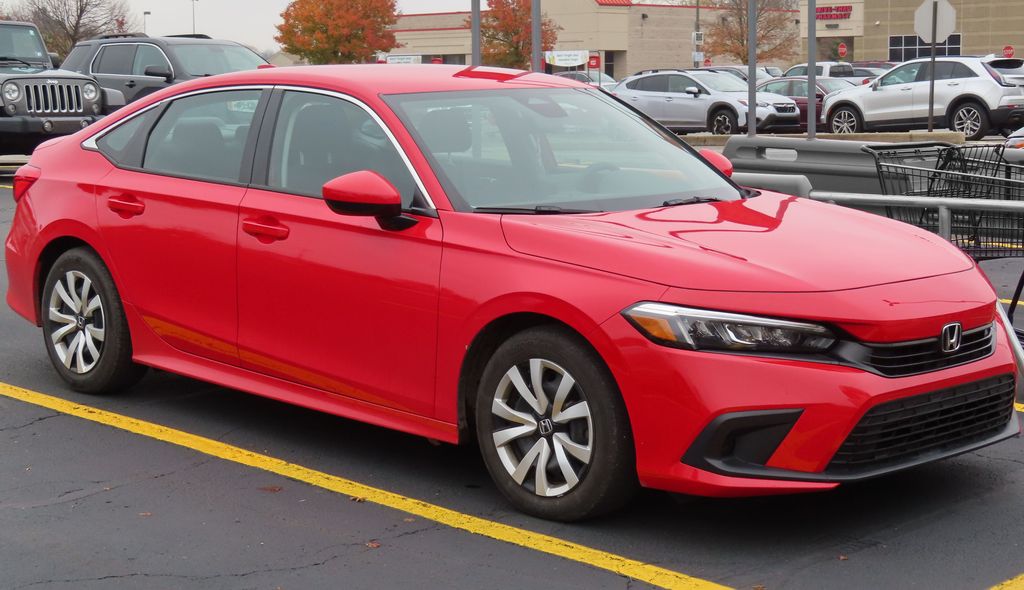
2. **Honda Civic: The Dependable Daily Driver**For many years, the Honda Civic has consistently ranked as a top choice for car buyers, renowned for its compelling blend of reliability, affordability, and practical design. It’s a vehicle that effortlessly integrates into daily life, offering a hassle-free ownership experience that appeals to a broad spectrum of drivers, from first-time owners to seasoned commuters.
A key characteristic that drivers appreciate about the Civic is its infrequent need for repairs. Its engine, while simple in design, is remarkably robust and capable of lasting an impressively long time with just basic, routine care. This means owners can rely on their Civic day in and day out without the constant worry of unexpected mechanical failures.
It is common for Civic owners to confidently drive their vehicles for well over 200,000 miles, reporting very few major issues throughout their ownership. The secret lies in diligently following regular service routines, such as consistent oil changes and timely brake inspections. This proactive approach to maintenance ensures the vehicle’s long-term health and performance, mirroring Honda’s commitment to building durable cars.
Honda’s focus on quality extends to every component of the Civic, with parts, including the suspension, engine, and transmission, built with exceptional durability in mind. Should a repair ever become necessary, the Civic is also notably inexpensive to fix. Its widespread presence means that many local garages are highly skilled in servicing it, and replacement parts are both widely available and reasonably priced.
Beyond its mechanical fortitude, the Civic also offers excellent fuel economy, significantly reducing costs at the gas pump for daily commutes and longer journeys. The interior, though designed with simplicity, provides ample comfort and space for both passengers and luggage, complemented by practical features like reliable air conditioning and sound systems. Even older Civic models continue to demonstrate strong performance, a testament to their enduring build quality and overall dependability.
Car Model Information: 2013 Honda Civic Si
Caption: 2024 Honda Civic liftback
Manufacturer: Honda
Aka: ubl
Production: 1972–present
Class: Subcompact car
BodyStyle: fastback,Sedan (automobile)
Layout: Front-engine, front-wheel-drive layout,Front-engine, four-wheel-drive layout
Predecessor: Honda N600,Honda Z600
Categories: 1980s cars, 1990s cars, 2000s cars, 2010s cars, 2020s cars
Summary: The Honda Civic is a series of automobiles manufactured by Honda since 1972. As of 2023, the Civic is positioned between the Honda Fit/City and Honda Accord in Honda’s global passenger car line-up. It is one of the best-selling automobiles in history, with over 27 million units sold through 2021. The first-generation Civic was introduced in July 1972 as a two-door fastback sedan, followed by a three-door hatchback that September. With a 1,169 cc transverse engine and front-wheel drive, the car provided good interior space despite its small overall dimensions. Initially gaining a reputation for being fuel-efficient, reliable and environmentally friendly, later iterations have become known for performance and sportiness, especially the Civic Si, SiR, and Type R versions. It is currently in its eleventh generation, which has been produced since 2021. The Civic has often been rebadged for international markets, and it served as the basis for the Honda CR-X, the Honda CR-X del Sol, the Concerto, the first generation Prelude, the Civic Shuttle (which later became the Orthia) and the CR-V (which in turn was used as the basis for the Honda FR-V).
Get more information about: Honda Civic
Buying a high-performing used car >>>
Brand: Honda Model: Civic
Price: $11,000 Mileage: 150,876 mi.
Read more about: Navigating the 2025 Market: Edmunds’ Expert Guide to the 12 Best New Cars Under $30,000 for Savvy Buyers
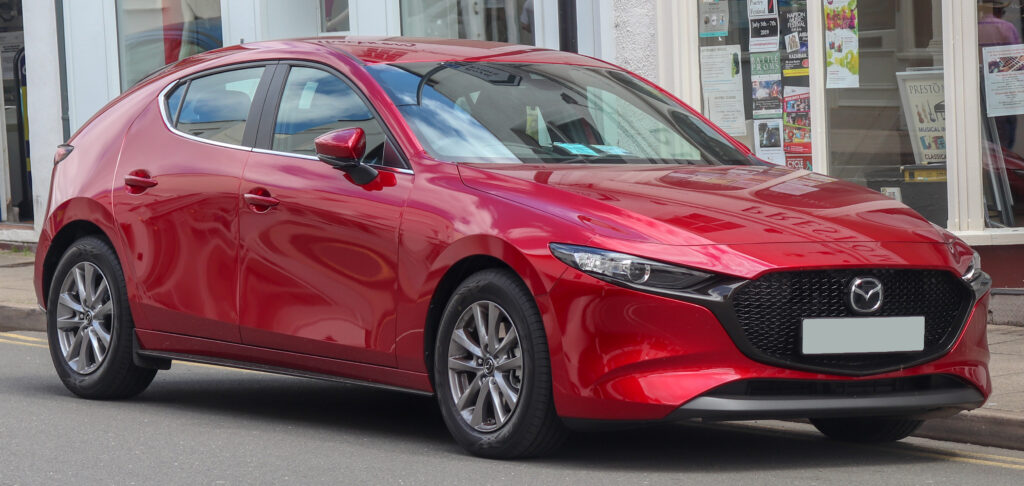
3. **Mazda3: Sporty Performance, Enduring Quality**The Mazda3 masterfully combines a fun-to-drive experience with remarkable dependability, setting it apart in the compact car segment. Drivers consistently praise its smooth, sporty ride, which manages to deliver an engaging feel without demanding high maintenance costs, making it an attractive proposition for those who enjoy driving but also value practicality.
Over the years, Mazda has diligently refined its manufacturing processes and engineering standards, leading to a significant enhancement in overall vehicle quality. The Mazda3 stands as a clear testament to these efforts, now widely recognized as one of the brand’s most trusted and impeccably built models. This dedication to excellence ensures that owners are getting a car designed for lasting performance.
Drivers often highlight the Mazda3’s light and responsive handling, making it a joy to navigate through city streets or cruise effortlessly on highways. Despite its dynamic appearance and feel, this vehicle is not prone to constant repairs. Adhering to simple, routine maintenance, such as regular oil changes and fluid checks, is generally sufficient to keep it in superb condition, minimizing unexpected service visits.
Another significant advantage of the Mazda3 is its impressive fuel efficiency. Equipped with an engine designed to maximize mileage, it helps drivers travel farther on each tank, contributing to substantial savings at the gas pump. This economic benefit, coupled with its reliable performance, enhances its appeal as a cost-effective choice for everyday use.
Inside, the Mazda3 boasts a clean, modern design that surprisingly imparts a premium feel, despite its affordable price point. Its controls are intuitively designed and user-friendly, with features like air conditioning, audio systems, and display screens functioning reliably without issues. Mechanics often find the Mazda3 straightforward to work on, with replacement parts being both accessible and reasonably priced, further solidifying its status as a smart, long-term investment. Even older Mazda3 models continue to impress with their smooth ride and responsive handling, proving their enduring quality.
Car Model Information: 2025 Mazda Mazda3 FWD w/Select Package
Name: Mazda3
Manufacturer: Mazda
Aka: Mazda Axela (Japan and China, 2003–2019)
Production: 2003–present
Class: Compact car
BodyStyle: Sedan (automobile),hatchback
Layout: Front-engine, front-wheel-drive layout,Front-engine, four-wheel-drive layout
Predecessor: Mazda Familia
Categories: 2010s cars, 2020s cars, All Wikipedia articles written in British English, All articles needing rewrite, All articles with dead external links
Summary: The Mazda3 (known as the Mazda Axela in China and Japan (first three generations until 2019), a combination of “accelerate” and “excellent”) is a compact car manufactured by Mazda, available as a 5-door hatchback and 4-door sedan across all generations. It was first introduced in 2003 as a 2004 model, replacing the Familia/323/Protegé in the C-segment. The second-generation Mazda3 for the 2009 model year was unveiled in late 2008, with the sedan premiering at the Los Angeles Auto Show and the hatchback at the Bologna Motor Show. For the 2012 model year, Mazda began offering the Mazda3 with their newly developed Skyactiv technology, including a more rigid body, a new direct-injection engine, and a new 6-speed transmission. The third generation was introduced in mid-2013 as a 2014 model year. The third-generation model is the first Mazda3 to adopt the “Kodo” design language and a more complete Skyactiv range of technologies and the first to be made by Mazda independently. The fourth-generation Mazda3 for the 2019 model year was unveiled in November 2018 at the Los Angeles Auto Show. For the 2019 model, the all-new Mazda3 is equipped with the updated Skyactiv technologies, including a spark-controlled compression ignition engine marketed as the Skyactiv-X. A performance-oriented version of the Mazda3 was marketed until 2013 as the Mazdaspeed3 in North America, Mazdaspeed Axela in Japan, and the Mazda3 MPS in Europe and Australia. The Mazda3 became one of Mazda’s fastest-selling vehicles, with cumulative sales in January 2019 of over 6 million units.
Get more information about: Mazda3
Buying a high-performing used car >>>
Brand: Mazda Model: Mazda3
Price: $26,341 Mileage: 2,434 mi.
Read more about: Navigating the 2025 Market: Edmunds’ Expert Guide to the 12 Best New Cars Under $30,000 for Savvy Buyers

4. **Hyundai Elantra: Value with an Unbeatable Warranty**The Hyundai Elantra has steadily risen to prominence as a preferred option for consumers seeking a dependable car that doesn’t break the bank. It consistently delivers solid performance and maintains its integrity over time with proper care, embodying the manufacturer’s dedication to quality and customer satisfaction in the budget-friendly segment.
In recent years, Hyundai has made significant strides in enhancing the build quality and engineering of its vehicle lineup. The Elantra stands out as a prime example of this concerted effort, showcasing improved durability and a marked reduction in mechanical issues compared to earlier models. This evolution has made it a much more reliable choice for discerning buyers.
Remarkably, the Elantra typically requires minimal repairs when properly maintained. Adhering to routine checks, such as consistent oil changes and tire rotations, is usually all that’s needed to ensure its smooth operation and long-term health. Drivers often express a sense of peace of mind with the Elantra, knowing it’s unlikely to present them with sudden breakdowns or unexpectedly costly fixes, a common concern with some other budget-oriented cars.
A standout feature that significantly boosts the Elantra’s value proposition is Hyundai’s robust warranty. The brand frequently offers an exceptional 10-year or 100,000-mile powertrain warranty, which far surpasses the coverage provided by most competitors. This extensive warranty offers substantial financial protection, as any major issues that arise are often covered at no additional cost to the owner, leading to considerable long-term savings.
Beyond its reliability and impressive warranty, the Elantra is also recognized for its good gas mileage, which helps owners save money on fuel expenses while still enjoying a comfortable driving experience. The interior is thoughtfully designed and comfortable, featuring useful amenities like touchscreens, air conditioning, and Bluetooth connectivity, even in older models. Mechanics generally find the Elantra easy to repair, and parts are both affordable and readily available, keeping potential repair costs low and reinforcing its position as a practical, dependable, and stress-free option for everyday driving.
Car Model Information: 2023 Hyundai ELANTRA SEL
Name: Hyundai Elantra/Avante
Manufacturer: Hyundai Motor Company
Aka: Hyundai Avante,Hyundai Lantra (1990–2000),Hyundai i30 Sedan (2020–present)
Production: 1990–present
Class: Compact car
Layout: Front-engine, front-wheel-drive layout
Predecessor: Hyundai Stellar
Categories: 2000s cars, 2010s cars, 2020s cars, All Wikipedia articles written in British English, All articles with bare URLs for citations
Summary: The Hyundai Elantra, also known as the Hyundai Avante, is a compact car produced by the South Korean manufacturer Hyundai since 1990. The Elantra was initially marketed as the Lantra in Australia and some European markets. In Australia, this was due to the similarly named Mitsubishi Magna Elante model; in Europe because of the Lotus Elan. The home market name Avante used from the second generation is not used in most export markets due to its similarity with Audi’s “Avant” designation, used for their station wagon models. The name was standardized as “Elantra” worldwide in 2001 (except in South Korea, Singapore and Russia).
Get more information about: Hyundai Elantra
Buying a high-performing used car >>>
Brand: Hyundai Model: Elantra
Price: $20,347 Mileage: 27,335 mi.
Read more about: Navigating the 2025 Market: Edmunds’ Expert Guide to the 12 Best New Cars Under $30,000 for Savvy Buyers
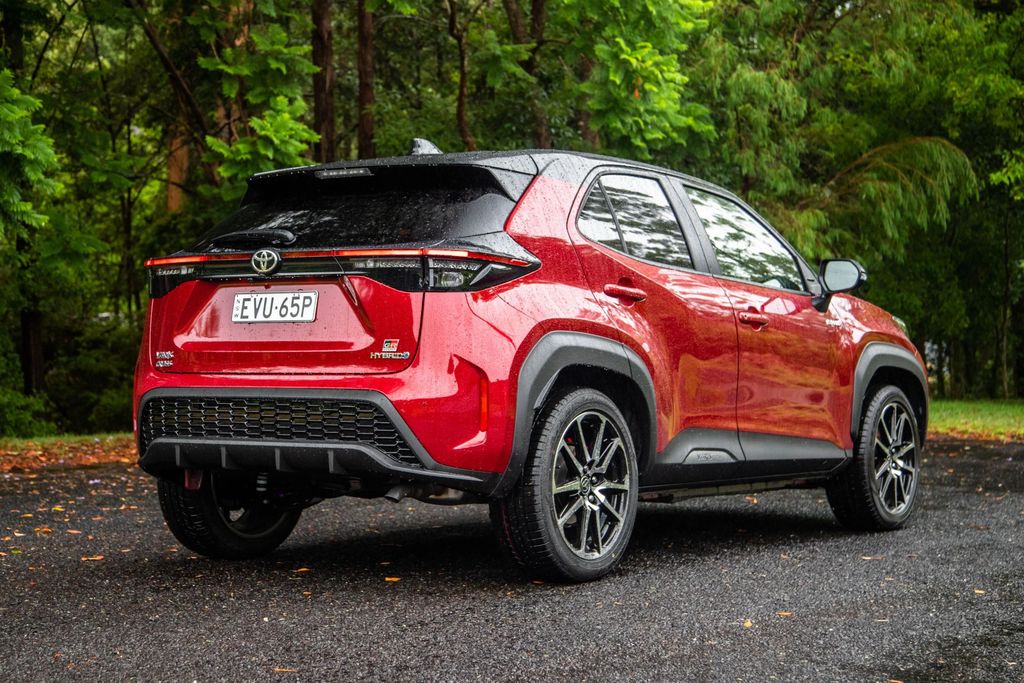
5. **Toyota Yaris: Compact Size, King of Low Maintenance**The Toyota Yaris, while not boasting a plethora of luxurious features, is engineered with a singular focus on durability and lasting performance. This compact car, despite its modest size, has carved out a niche for itself as an incredibly dependable vehicle capable of delivering many years of reliable service, making it an ideal choice for the practical, budget-conscious driver.
One of the Yaris’s most compelling attributes is its remarkably low maintenance costs. It consistently ranks as one of the most inexpensive cars to maintain over a 10-year period, a crucial factor for anyone looking to minimize long-term ownership expenses. Its inherent simplicity, with fewer complex systems compared to more elaborate vehicles, directly contributes to its lower propensity for breakdowns.
This reputation for stellar reliability is firmly underpinned by Toyota’s longstanding legacy of building vehicles that endure. Even with consistent daily use, the Yaris is known to perform smoothly for hundreds of thousands of miles, requiring only minimal repairs throughout its extensive lifespan. This reliability translates directly into fewer unexpected expenses and greater peace of mind for owners.
Given its compact dimensions, the Yaris is exceptionally easy to park and maneuver, making it an undisputed champion for urban driving environments where space is at a premium. Its efficiency extends to fuel consumption, as it is notably easy on gas. This is a significant advantage, particularly for owners who frequently make short trips, leading to considerable savings at the fuel pump over time.
While the Yaris prioritizes practicality over extravagance, it still provides essential comforts, including efficient air conditioning, a respectable sound system, and a straightforward yet comfortable interior, making it a perfectly viable choice for everyday commuting. Its affordability is further enhanced by low insurance costs and a strong resale value, even after many years of use. For students, commuters, or anyone prioritizing a reliable, no-frills, and cost-effective mode of transportation, the Toyota Yaris stands out as a wise investment that consistently delivers on its promises of reliability and savings.
Car Model Information: 2019 Toyota Yaris Sedan L
Name: Toyota Yaris
Caption: 2020 Toyota Yaris Design Hybrid (MXPH11, UK)
Manufacturer: Toyota
Aka: unbulleted list
Production: unbulleted list
Class: Supermini
BodyStyle: unbulleted list
Predecessor: unbulleted list
Categories: 2000s cars, 2010s cars, 2020s cars, All-wheel-drive vehicles, All articles containing potentially dated statements
Summary: The Toyota Yaris is a supermini/subcompact car sold by Toyota since 1999, replacing the Starlet and Tercel. Up to 2019, Toyota had used the Yaris nameplate on export versions of various Japanese-market models, with some markets receiving the same vehicles under the Toyota Echo name through 2005. Starting in 2020, the Yaris nameplate began to be used in Japan, which replaced the Vitz nameplate. The Yaris nameplate has also been applied to other vehicles. From 1999 to 2005, the nameplate had been used for the Yaris Verso mini MPV sold in Europe, where it was known in Japan as the FunCargo. Since 2020, the nameplate has also been used for the subcompact crossover SUV offering called Yaris Cross. In North America, most Yaris sedan models sold from 2015 to 2020 and Yaris hatchbacks sold from 2019 until 2020 were restyled versions of the Mazda2, produced and developed by Mazda. In 2020, Toyota introduced the GR Yaris, which is a three-door performance-oriented variant of the XP210 series Yaris using the Gazoo Racing branding. It is built as a homologation model for the FIA World Rally Championship. The name “Yaris” is derived from “Charis”, the singular form of Charites, the Greek goddesses of charm and beauty. As of March 2020, the Yaris has sold 8.71 million units worldwide.
Get more information about: Toyota Yaris
Buying a high-performing used car >>>
Brand: Toyota Model: Yaris
Price: $15,888 Mileage: 39,402 mi.
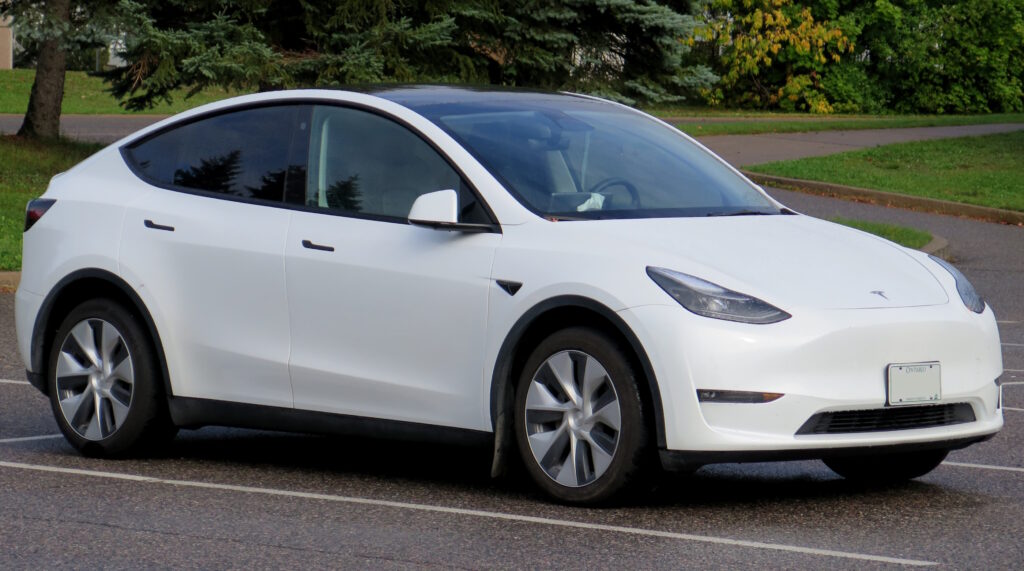
6. **Tesla: The EV Leader in Low Repair Costs (Brand Focus)**Tesla, a name synonymous with innovation and electric vehicles, holds a unique distinction on the list of cars that rarely need repairs: it is the sole EV to secure a top spot for the cheapest repair costs. This achievement underscores Tesla’s engineering prowess, demonstrating that cutting-edge technology can indeed coexist with long-term affordability in vehicle maintenance. According to Consumer Reports, the estimated 1-5 year cost for Tesla repairs is $580, with the 6-10 year cost at $3,455, leading to an impressive 10-year total cost of just $4,035.
Beyond its surprising affordability in repairs, the Tesla brand is widely celebrated for its luxurious features, exhilarating driving experience, and profound positive environmental impact. These attributes, often associated with a premium price tag, are part of a package that also delivers exceptional reliability. The brand’s commitment to advanced technology and performance doesn’t come at the expense of its vehicles’ long-term operational costs, offering a compelling proposition for environmentally conscious and financially savvy drivers alike.
One of the models that exemplifies the brand’s commitment to accessibility, despite its luxury perception, is the Model Y Long Range RWD, which starts at an attractive price point of $31,490. This makes Tesla not just a leader in electric vehicle technology and performance, but also a surprisingly competitive option in the segment of cars that prove affordable to own over a decade, challenging conventional wisdom about luxury and cost.
As an electric vehicle, Tesla benefits inherently from a simpler drivetrain compared to traditional gasoline cars, a characteristic that often leads to fewer mechanical parts that can wear out or break down. This design principle contributes significantly to the lower repair frequency and, consequently, reduced maintenance expenses that electric vehicles like Teslas enjoy. The absence of components such as spark plugs, oil filters, and complex exhaust systems simplifies the overall vehicle structure, minimizing potential points of failure.
This combination of advanced technology, environmental benefits, and remarkably low long-term repair costs positions Tesla as a compelling and forward-thinking investment. For consumers seeking a vehicle that offers a cutting-edge driving experience alongside enduring reliability and significant savings on maintenance over a decade, Tesla represents a top-tier choice that delivers substantial value and peace of mind.
Moving beyond individual models, it’s imperative to explore other brands and specific vehicles that consistently demonstrate long-term reliability and low ownership costs. For consumers aiming to mitigate the financial pressures associated with vehicle maintenance, examining brands with a proven track record for durability and minimal repair needs is a strategic approach. This continued exploration delves into manufacturers and models that prioritize longevity, offering a deeper understanding of what constitutes a truly economical vehicle in the long run.
This next set of vehicles, thoroughly evaluated by Consumer Reports, reinforces the principle that upfront affordability, when combined with exceptional reliability, leads to significant savings over a vehicle’s lifespan. By focusing on brands that exhibit strong engineering and a commitment to quality, we can empower consumers to make purchasing decisions that protect their wallets from unforeseen repair expenses. The brands and models discussed here represent excellent options for drivers seeking dependable transportation without the burden of constant mechanic visits.
Car Model Information: 2024 Tesla Model Y Long Range
NativeName: nobold
NativeNameLang: sr
Alt: Head-and-shoulder photograph of a slender man with dark hair and moustache, dark suit and white-collar shirt
Caption: [object Object]
BirthDate: [object Object]
BirthPlace: Smiljan, Croatia
DeathDate: [object Object]
DeathPlace: New York City
RestingPlace: Nikola Tesla Museum
Citizenship: ubl
AlmaMater: Graz University of Technology
Occupation: Engineer,futurist,inventor
Awards: ubil
Discipline: ubl
SignificantDesign: Induction motor
SignificantProjects: Wireless power transfer
SignificantAdvance: Polyphase system
Signature: Nikola Tesla signature 1900.svg
Categories: 1856 births, 1943 deaths, 19th-century American engineers, 19th-century Serbian engineers, 20th-century American engineers
Summary: Nikola Tesla (10 July 1856 – 7 January 1943) was a Serbian-American engineer, futurist, and inventor. He is known for his contributions to the design of the modern alternating current (AC) electricity supply system.
Born and raised in the Austrian Empire, Tesla first studied engineering and physics in the 1870s without receiving a degree. He then gained practical experience in the early 1880s working in telephony and at Continental Edison in the new electric power industry. In 1884, he immigrated to the United States, where he became a naturalized citizen. He worked for a short time at the Edison Machine Works in New York City before he struck out on his own. With the help of partners to finance and market his ideas, Tesla set up laboratories and companies in New York to develop a range of electrical and mechanical devices. His AC induction motor and related polyphase AC patents, licensed by Westinghouse Electric in 1888, earned him a considerable amount of money and became the cornerstone of the polyphase system, which that company eventually marketed.
Attempting to develop inventions he could patent and market, Tesla conducted a range of experiments with mechanical oscillators/generators, electrical discharge tubes, and early X-ray imaging. He also built a wirelessly controlled boat, one of the first ever exhibited. Tesla became well known as an inventor and demonstrated his achievements to celebrities and wealthy patrons at his lab, and was noted for his showmanship at public lectures. Throughout the 1890s, Tesla pursued his ideas for wireless lighting and worldwide wireless electric power distribution in his high-voltage, high-frequency power experiments in New York and Colorado Springs. In 1893, he made pronouncements on the possibility of wireless communication with his devices. Tesla tried to put these ideas to practical use in his unfinished Wardenclyffe Tower project, an intercontinental wireless communication and power transmitter, but ran out of funding before he could complete it.
After Wardenclyffe, Tesla experimented with a series of inventions in the 1910s and 1920s with varying degrees of success. Having spent most of his money, Tesla lived in a series of New York hotels, leaving behind unpaid bills. He died in New York City in January 1943. Tesla’s work fell into relative obscurity following his death, until 1960, when the General Conference on Weights and Measures named the International System of Units (SI) measurement of magnetic flux density the tesla in his honor. There has been a resurgence in popular interest in Tesla since the 1990s. Time magazine included Tesla in their “100 Most Significant Figures in History” list.
Get more information about: Nikola Tesla
Buying a high-performing used car >>>
Brand: Tesla Model: Tesla
Price: $35,999 Mileage: 17,805 mi.
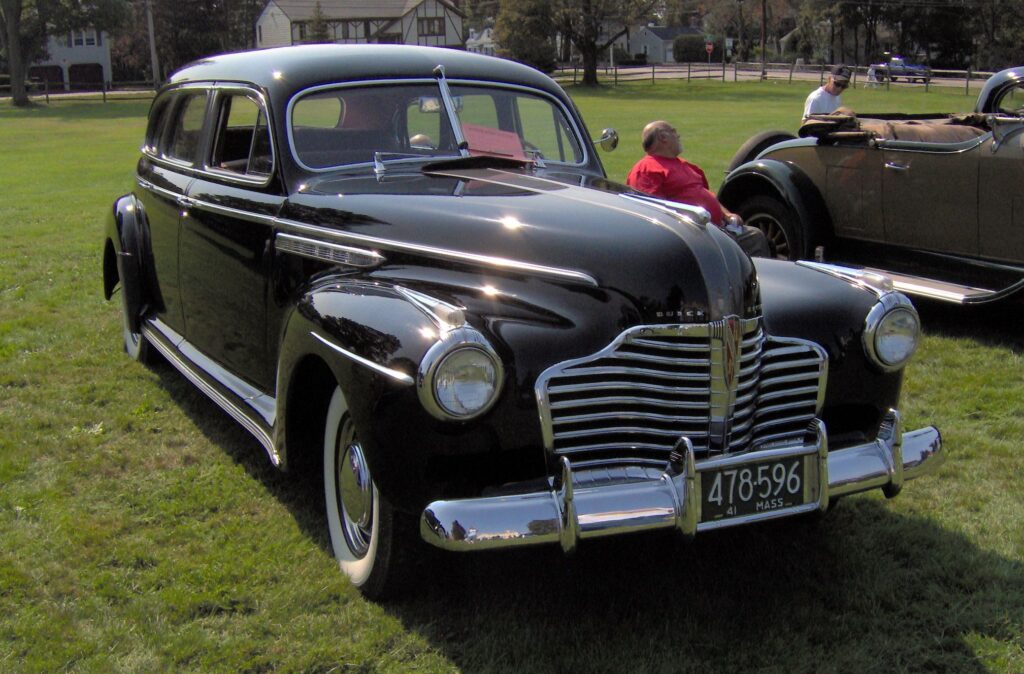
7. **Buick: A Blend of Style, Tech, and Low Costs**Buick has carved out a notable position in the automotive market, offering a compelling combination of sophisticated design, contemporary technology, and impressive fuel efficiency, all while maintaining an attractive price point. According to Consumer Reports, Buick vehicles are also distinguished by their remarkably low repair costs, making them a wise financial choice for discerning consumers. The estimated 1-5 year repair cost for a Buick is $900, with the 6-10 year cost at $4,000, culminating in a 10-year total cost of $4,900.
This brand’s commitment to delivering a positive ownership experience is evident in its overall vehicle package. Buick models frequently feature a “sporty chic” design that appeals to a broad demographic, marrying aesthetics with practicality. These vehicles are not merely visually appealing; they are also equipped with the latest technological features, enhancing both convenience and the driving experience. This integration of design and tech demonstrates Buick’s understanding of modern driver expectations.
Furthermore, Buick vehicles are designed with fuel efficiency in mind, which translates directly into cost savings at the pump for owners. This aspect is particularly crucial given the fluctuating nature of fuel prices, making a fuel-efficient car a significant advantage in managing ongoing transportation expenses. The combination of stylish design, advanced features, and economical operation solidifies Buick’s appeal.
A prime example of Buick’s affordable and feature-rich offerings is the 2025 Buick Envista, which starts at a competitive price of just $22,900. This pricing strategy, coupled with the brand’s low repair cost profile, positions Buick as a strong contender for buyers seeking a vehicle that provides substantial value without incurring high long-term maintenance burdens. Buick demonstrates that luxury, technology, and affordability can indeed coalesce effectively.
Read more about: Beyond the Chrome: Unpacking the 12 Most Notorious Cars Saddled with a ‘Troublesome Driver’ Stigma – And What Really Drives Those Labels
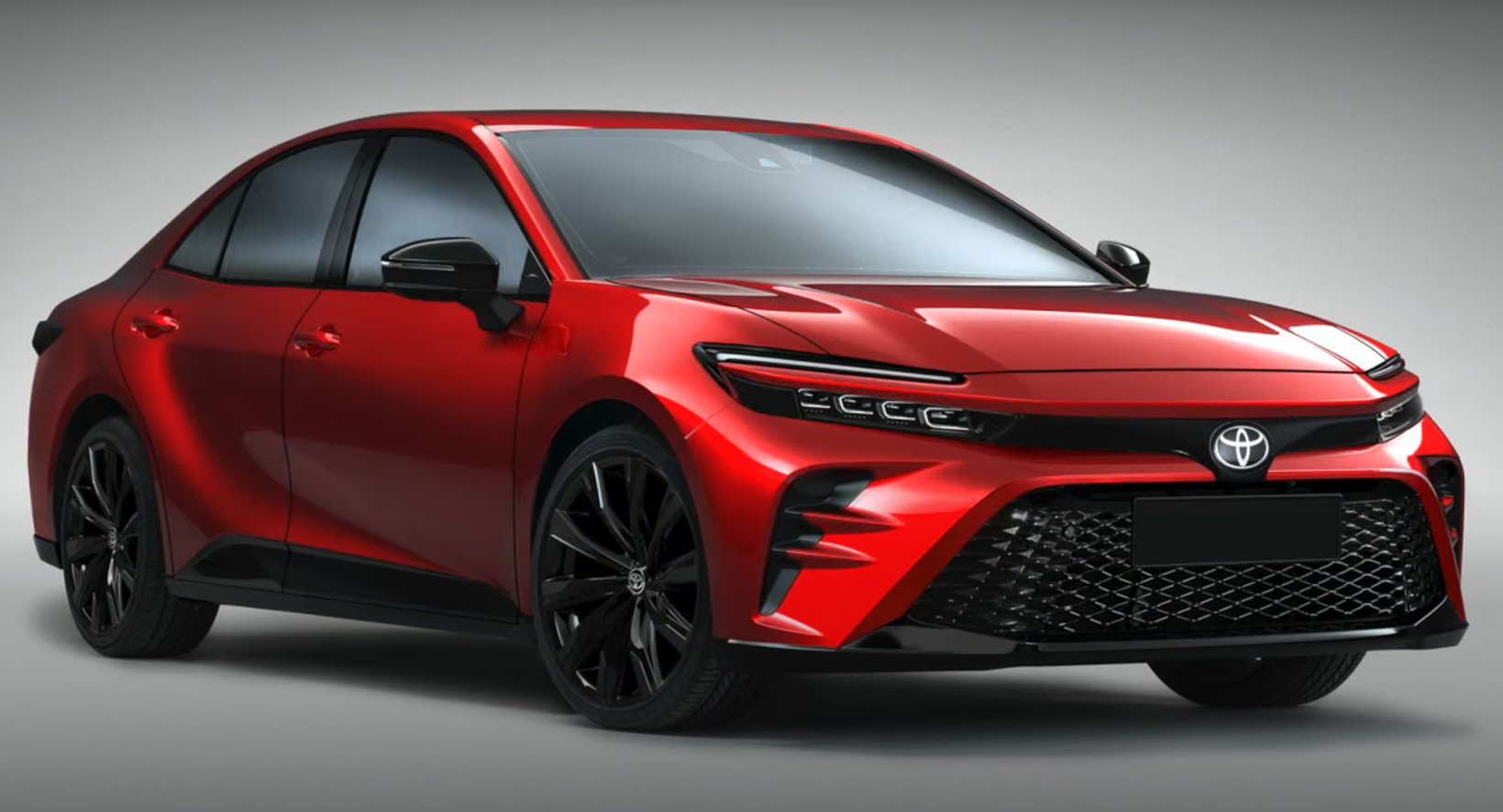
8. **Toyota (Brand Focus): Unwavering Dependability and Value**Toyota, as a brand, continues to set industry benchmarks for dependability and long-term value, extending far beyond the individual models already highlighted. The brand has cultivated a long-standing reputation for building vehicles that are not only robust but also consistently inexpensive to maintain. This overarching commitment to quality and owner satisfaction makes Toyota a leading choice for consumers prioritizing reliability and cost-effectiveness. The 1-5 year cost for Toyota repairs is estimated at $1,125, with the 6-10 year cost at $3,775, leading to a 10-year total cost of $4,900.
The brand’s widespread recognition for durability is rooted in meticulous engineering and stringent manufacturing standards across its entire lineup. Toyota vehicles are designed to last, often exceeding hundreds of thousands of miles with proper routine maintenance. This consistent performance translates directly into fewer unexpected breakdowns and lower repair frequencies, a critical factor for managing overall vehicle ownership costs. Consumer Reports data consistently reinforces Toyota’s position as a top-tier brand for reliability.
Beyond its mechanical fortitude, Toyota vehicles are also lauded for their budget-friendly nature. This encompasses not just the initial purchase price, but also the long-term expenses related to fuel consumption and replacement parts. The popularity of Toyota models ensures a vast network of mechanics familiar with their systems, alongside readily available and affordably priced components, contributing significantly to lower repair bills when issues do arise.
The wildly popular Toyota Camry, for instance, starts at an accessible price point of $22,050 and even offers a hybrid option, further enhancing its appeal as a fuel-efficient and reliable choice. This demonstrates Toyota’s ability to provide diverse options that cater to different consumer needs while upholding its core values of dependability and economy. The brand’s presence as a top-ranked manufacturer for reliability, securing third place after Acura and Honda in a recent report, further validates its enduring commitment to quality.

9. **Lincoln: Luxury That Lasts, Without the High Repair Bills**Lincoln stands out as a luxury brand that defies the common perception that premium vehicles automatically incur exorbitant repair costs. Known for its sophisticated style, exceptional comfort, and advanced technological features, Lincoln simultaneously offers impressive reliability. This balance of luxury and dependability makes it an attractive option for consumers desiring an elevated driving experience without the burden of frequent and costly maintenance. The estimated 1-5 year repair cost for Lincoln vehicles is $940, with the 6-10 year cost at $4,100, totaling a 10-year cost of $5,040.
The brand’s vehicles are meticulously designed to provide a “cool style” that exudes elegance and prestige, setting them apart in the luxury segment. Inside, Lincoln models prioritize comfort, offering plush interiors and a refined ambiance that makes every journey a pleasure. These aesthetic and comfort-driven aspects are seamlessly integrated with robust engineering, ensuring that the vehicles not only look and feel premium but also perform reliably over time.
Lincoln’s commitment to advanced technology is another cornerstone of its appeal. Vehicles are equipped with cutting-edge features that enhance safety, connectivity, and overall driving convenience. These systems are designed for durability, contributing to the brand’s reputation for reliability. Owners can expect these advanced features to function consistently, minimizing the need for unexpected electrical or system-related repairs that often plague less reliable brands.
The starting price for a 2024 Lincoln Corsair, for example, is $38,730, as noted by Kelly Blue Book. This price point, combined with Lincoln’s demonstrated low long-term repair costs, presents a compelling value proposition within the luxury market. For those seeking the blend of sophistication and a dependable ownership experience, Lincoln offers a noteworthy option that challenges the typical high-cost narrative associated with premium automotive brands.

10. **Ford (Brand Focus): An Enduring American Icon of Value**Ford has long been an iconic American brand, deeply ingrained in the nation’s cultural fabric, and its enduring appeal is consistently bolstered by its commitment to affordability, great value, and reliability. As a leading manufacturer for decades, Ford continues to innovate and maintain a strong presence in the consumer market, offering vehicles that cater to a wide range of needs while demonstrating solid long-term dependability. The 1-5 year repair cost for Ford vehicles is estimated at $1,100, with the 6-10 year cost at $4,300, leading to a 10-year total cost of $5,400.
Beyond its affordability and value, Ford’s reliability record is a significant factor in its sustained popularity. The brand’s engineers focus on building robust vehicles capable of enduring various driving conditions and demanding use. This dedication to solid construction minimizes the frequency of repairs, allowing owners to enjoy their vehicles without constant worry about unexpected mechanical issues. Ford’s widespread network of service centers and readily available parts further contribute to manageable maintenance.
The cultural impact of Ford is undeniable, with models like the F-Series trucks becoming synonymous with American ruggedness and utility. This legacy is coupled with continuous innovation, ensuring that Ford vehicles remain competitive and relevant in an evolving automotive landscape. The brand’s ability to adapt and introduce new technologies while preserving its core values of durability and value is a testament to its market leadership.
A prime example of Ford’s blend of utility and reliability is the 2024 Ford F-150 XL Model, which starts at $36,965. This popular pickup truck, along with other Ford models, consistently performs well in reliability assessments. In fact, specific models such as the 2015 Ford F-150 have been recognized among the individual vehicles least likely to need repairs, underscoring the brand’s commitment to building long-lasting and dependable vehicles for its diverse consumer base.
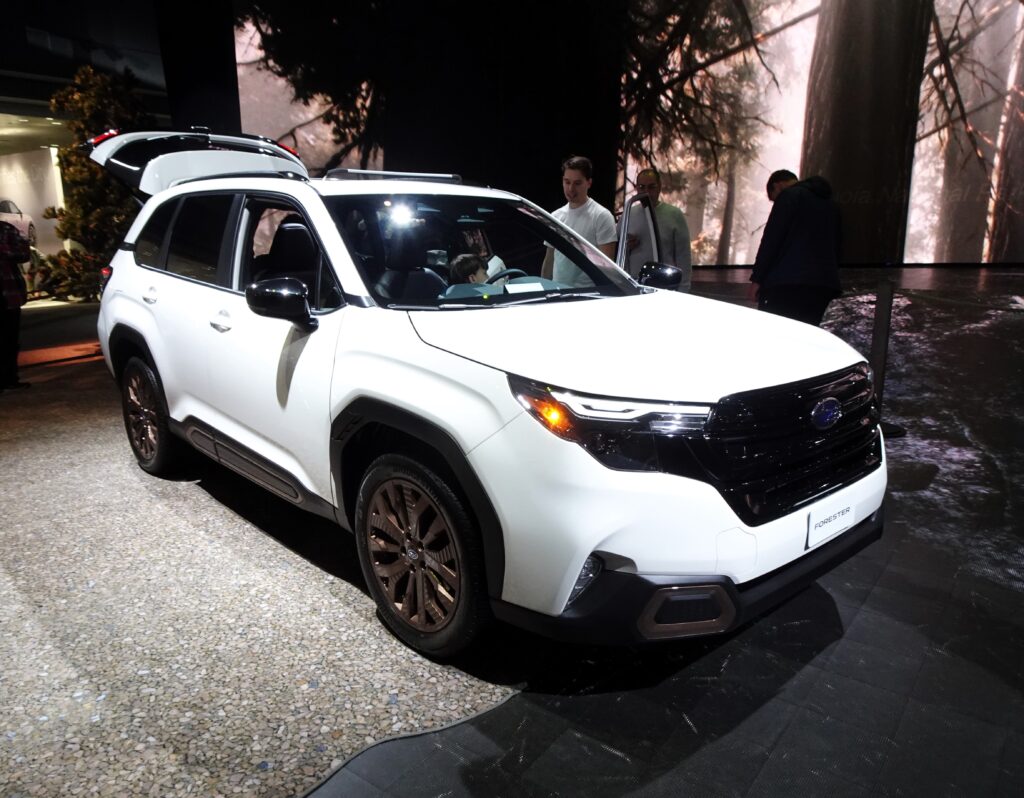
11. **Subaru Forester: Toughness for Every Terrain**The Subaru Forester has firmly established itself as a benchmark for toughness and reliability, particularly for drivers who navigate diverse terrains and demand a capable vehicle. Subaru’s dedication to engineering vehicles that can tackle various elements with ease is embodied in the Forester, making it a standout choice for those prioritizing confidence and minimal maintenance in challenging conditions. The brand, Subaru, has also been recognized in the top 10 for repair frequency, indicating low repair needs overall.
At the heart of the Forester’s robust performance is Subaru’s signature all-wheel-drive system, which is a key differentiator. This system provides exceptional traction and stability, offering drivers enhanced control and safety across different weather and road conditions. This design philosophy extends beyond performance, as the all-wheel-drive system is also engineered for durability, contributing to the vehicle’s overall long-term reliability and reduced need for repairs.
The Forester is designed with resilience in mind, from its foundational chassis to its internal components. This focus on durability means that owners can expect their vehicle to withstand the rigors of daily driving, including off-road excursions, without prematurely wearing out. Such robust construction is a critical factor in mitigating the frequency of repair visits, ensuring the vehicle remains a dependable companion for years.
Subaru’s consistent appearance on reliability lists underscores the brand’s commitment to quality manufacturing. The Forester benefits from this brand-wide excellence, offering a compelling package of capability and peace of mind. For consumers who value a vehicle that is not only adventurous but also steadfastly reliable and inexpensive to maintain, the Subaru Forester represents a highly practical and well-engineered choice, providing dependable service whether on city streets or rugged trails.
Car Model Information: 2022 Subaru Forester Wilderness
Name: Subaru Forester
Manufacturer: Subaru
Production: 1997–present
Class: Compact crossover SUV
BodyStyle: SUV
Related: Subaru Impreza
Layout: Front-engine, all-wheel drive
Predecessor: Subaru Bighorn
Categories: 2000s cars, 2010s cars, All-wheel-drive vehicles, All Wikipedia articles written in American English, All articles containing potentially dated statements
Summary: The Subaru Forester is a compact crossover SUV that has been manufactured by Subaru since 1997. The first generation was built on the platform of the Impreza in the style of a taller station wagon, a style that continued to the second generation, while the third-generation model onwards moved towards a crossover SUV design. A performance model was available for the second-generation Forester in Japan as the Forester STi.
Get more information about: Subaru Forester
Buying a high-performing used car >>>
Brand: Subaru Model: Forester
Price: $25,330 Mileage: 65,018 mi.
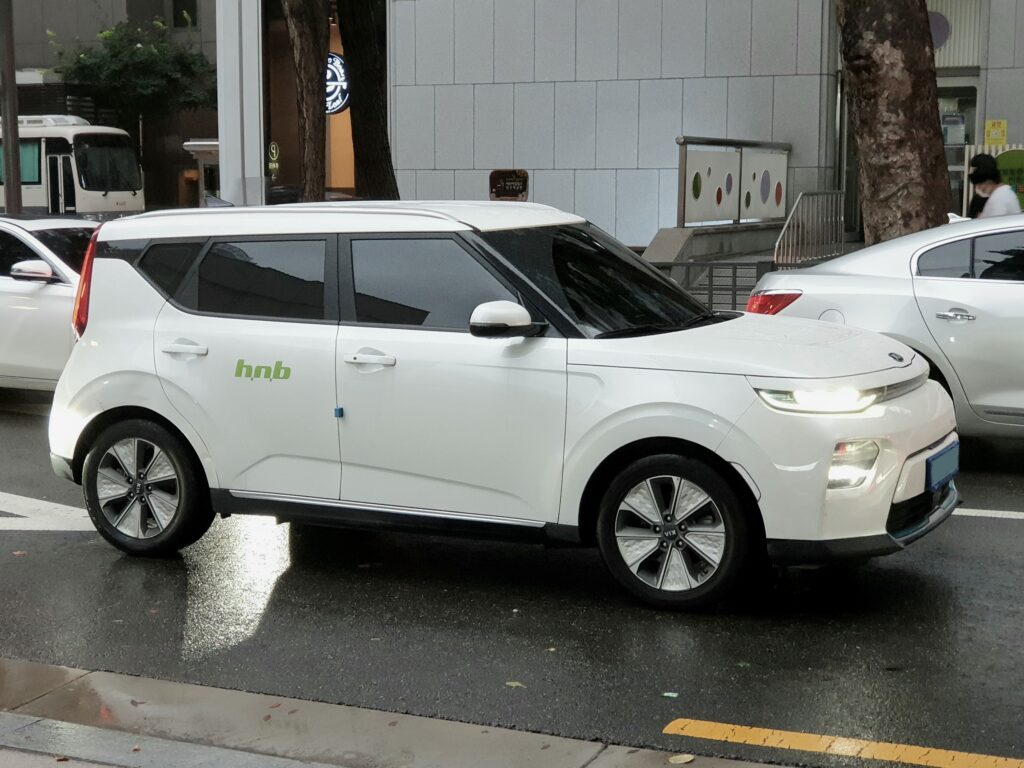
12. **Kia Soul: Personality Meets Practical Dependability**The Kia Soul offers a refreshing and distinctive presence in the automotive market, uniquely blending an engaging personality with impressive dependability and solid construction. This vehicle stands out not just for its iconic design but also for its commitment to reliability, making it an attractive choice for drivers who seek a car with character that simultaneously demands minimal repair visits. Kia, as a brand, has earned a reputation for low average repair costs, ranking third with an average cost of $317.
The “distinctive design” of the Kia Soul is a significant part of its appeal, appealing to consumers looking for a vehicle that expresses individuality. However, this aesthetic appeal is backed by a robust build quality that ensures long-term performance. Kia’s dedication to solid construction across its models contributes to the Soul’s ability to withstand the stresses of everyday driving, translating into a lower frequency of unexpected mechanical issues.
Furthermore, Kia’s focus on affordability extends to the long-term cost of ownership, as evidenced by the brand’s low average repair costs. This commitment to economy is crucial for budget-conscious buyers, as it means fewer financial surprises down the road. The availability of affordable parts and a growing network of knowledgeable mechanics further contribute to keeping maintenance expenses low for Kia Soul owners.
While the specific 10-year repair costs for the Kia Soul are not explicitly provided, the brand’s overall standing for low average repair costs, positioned after Hyundai and Mazda, indicates a strong commitment to value. This brand-level reliability is further highlighted by models such as the 2014 Kia Forte being listed among the least-costly-to-repair vehicles. The Kia Soul therefore offers a compelling option for those who desire a vehicle with a unique flair but without compromising on the critical factor of long-term dependability and minimal repair needs.
**Making an Informed Choice for Long-Term Savings**
Car Model Information: 2023 Kia Soul LX
Name: Kia Soul
Caption: 2023 Kia Soul GT Line
Manufacturer: Kia
Production: 2008–2025
Class: Subcompact crossover SUV
BodyStyle: hatchback
Layout: Front-engine, front-wheel-drive
ModelYears: 2010–2025
Categories: 2010s cars, All articles with dead external links, All articles with unsourced statements, Articles containing Korean-language text, Articles with dead external links from December 2017
Summary: The Kia Soul is a subcompact crossover SUV manufactured and marketed by Kia since 2008. Often described and marketed as a crossover since its introduction, the Soul is a hatchback with a box proportion and tall roof, which are designed to maximize its interior space. Despite its SUV-like styling, the Soul was never available with all-wheel drive, instead it is exclusively a front-wheel drive vehicle. The Soul first appeared in 2006 in the form of a concept model displayed at the North American International Auto Show in Detroit. The production model made its debut at the Paris Motor Show in 2008. During its introduction, Kia stated that the Soul is aimed at the North American market, and targeted towards buyers in the 18 to 35-year old range. The second-generation model was introduced in 2013 for the 2014 model year, which featured a larger exterior and interior dimensions along with a reworked chassis, while keeping its boxy styling. The Soul is currently in its third generation, which was introduced in 2018 for the 2019 model year. Since 2014, Kia has also marketed a battery electric variant as the Soul EV. The name “Soul” comes from the homophone of Seoul, the city that hosts Kia’s headquarters.
Get more information about: Kia Soul
Buying a high-performing used car >>>
Brand: Kia Model: Soul
Price: $19,000 Mileage: 55,083 mi.
In the current economic environment, where every dollar counts, the decision of purchasing a vehicle extends far beyond its initial sticker price. As Rachel Cruze aptly noted, “all other expenses related to cars, like insurance premiums, repair services, and replacement parts, have drastically increased recently.” This reality makes prioritizing long-term reliability and low maintenance costs an essential strategy for any savvy consumer. Choosing a car from brands like those highlighted—Toyota, Honda, Mazda, Hyundai, Tesla, Buick, Lincoln, Ford, Subaru, and Kia—is not merely about avoiding breakdowns; it’s about making a financially sound investment that provides peace of mind and significant savings over the years. By looking beyond superficial appeal and focusing on data-backed reliability, drivers can ensure their vehicle remains an asset, not a perpetual drain on their finances. This proactive approach to car buying will ultimately empower consumers to navigate the complexities of vehicle ownership with greater confidence and financial security.



